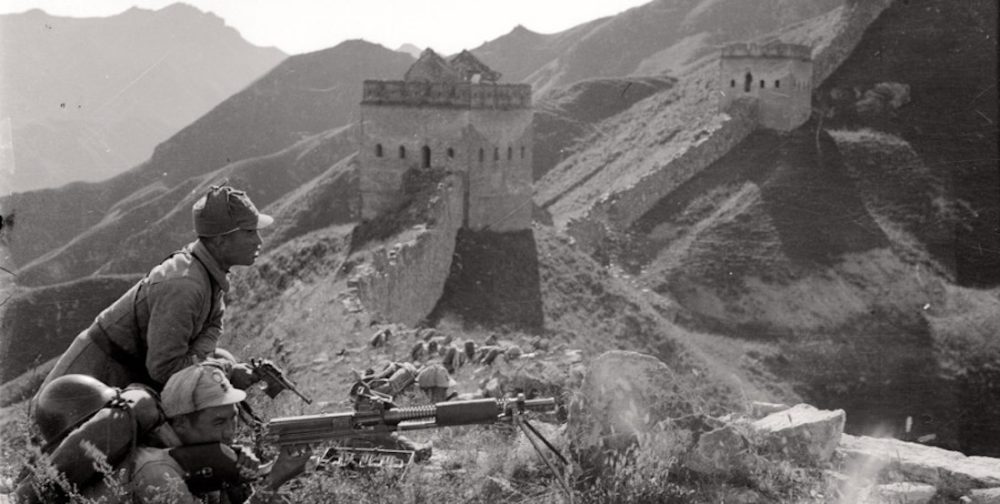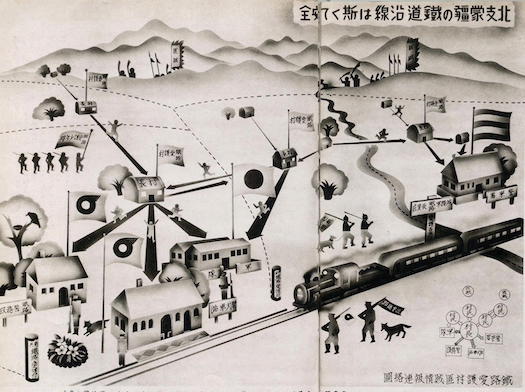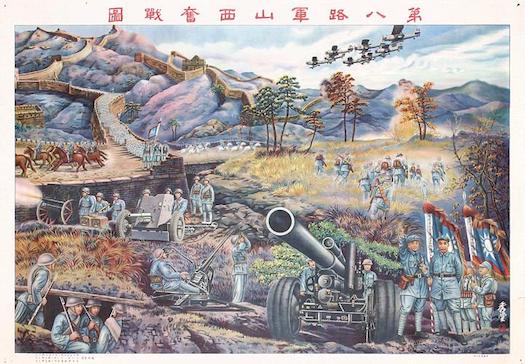
A Masterpiece Recalling the Grit and Sacrifice of the Eighth Route Army’s Hard-Fought Spring 1940 Victory Against Overwhelming Odds.

New York, N.Y. – The muted hum of the gallery contrasts sharply with the frozen violence depicted in Chen Jian’s monumental oil painting, Conque Niangzi Pass. Dominating the wall, it transports viewers from the controlled environment of the Chinese People’s War of Resistance Against Japanese Aggression Memorial Collection exhibition back to the jagged cliffs and desperate struggle of spring, 1940.
Here, rendered in thick impasto and somber earth tones punctuated by flashes of defiance, is the pivotal moment when the Eighth Route Army wrested control of the strategic Niangzi Pass from the Imperial Japanese Army.

Not Merely Historical Record, But Visceral Experience
Chen Jian, renowned for his evocative war art, employs a dynamic composition. The viewer’s eye is drawn upwards along the treacherous slopes, following the determined surge of Communist forces.
Figures are rendered with a powerful, almost sculptural quality – not idealized heroes, but weary, mud-spattered soldiers embodying sheer tenacity. Their faces, often only partially visible beneath helmets or in shadow, convey a spectrum of human emotion: grim resolve, fierce concentration, and the exhaustion of relentless combat.


Strategic Imperative: Holding the Gateway
Niangzi Pass was far more than a picturesque mountain defile. Situated in the formidable Taihang Mountains, it represented a crucial artery.
Controlling this pass meant controlling the flow of supplies and troop movements through a region vital to both Chinese resistance and Japanese occupation ambitions.
For the Imperial Japanese Army, securing it was essential to consolidate their hold and sever Eighth Route Army supply lines.
For the Chinese defenders, losing it would open a devastating corridor deeper into Communist-held territory. The spring of 1940 became the crucible for this decisive contest.
Chen Jian’s Palette of Resistance
Chen masterfully uses color and texture to narrate the battle’s brutality and the defenders’ spirit. The palette is dominated by ochres, umbers, and slate greys – the colors of rock, earth, and smoke – evoking the harsh, unforgiving landscape.
Stark contrasts emerge: the dull khaki of Japanese uniforms against the rugged terrain, the sudden crimson splash of blood or a torn banner, the determined glint of bayonets catching a sliver of obscured light.
Thick layers of paint mimic the churned mud and shattered rock underfoot, while the swirling, agitated brushstrokes in the sky suggest the chaos and thunder of bombardment. There are no clear skies here; only the oppressive weight of conflict.
The Human Cost Amidst Heroic Action
While the painting captures a moment of assault – the Eighth Route Army fighters scrambling over rocks, engaging in close-quarter combat, their momentum palpable – Chen Jian does not shy away from the profound cost. In the foreground, almost lost amidst the furious action, lie fallen figures.
One soldier, half-propped against a boulder, clutches a wound, his face a mask of pain and resignation. Another lies still, partially obscured, a stark reminder of the individual sacrifices swallowed by the larger narrative of victory. This inclusion prevents the scene from becoming mere triumphalism; it anchors the triumph in profound loss.
Echoes of the Battlefield in the Gallery
Standing before Conque Niangzi Pass, one feels the echo of rifle reports and the shouts of charging men. The painting transcends its specific historical moment, becoming a universal testament to the resilience of defenders fighting on their own soil against a technologically superior invader.
It speaks to the brutal calculus of guerrilla warfare, where knowledge of the terrain and sheer, desperate courage could counterbalance overwhelming firepower.
Chen Jian forces the viewer to confront the physical and emotional toll of such a victory, achieved not through distant strategy alone, but through blood, mud, and an unbreakable will embodied by each individual soldier clambering up that unforgiving slope. It is a powerful indictment of aggression and an enduring homage to the sacrifice demanded by national liberation.
A Legacy Cast in Paint and Memory

Conque Niangzi Pass serves as a crucial visual anchor for the Battle of Niangzi Pass, ensuring the Eighth Route Army‘s desperate stand in the spring of 1940 is not relegated to dry historical accounts alone.
It embodies the spirit of the wider Chinese People’s War of Resistance Against Japanese Aggression, a conflict that reshaped Asia and inflicted immense suffering.
Chen Jian’s work, housed within the Chinese People’s War of Resistance Against Japanese Aggression Memorial Collection, acts as a bridge across decades, demanding remembrance.
It reminds us that victories in such struggles, while strategically significant, are always etched in the deepest hues of human endurance and loss.
The defiant figures scrambling towards the pass remain forever frozen, not just conquering a geographical barrier, but conquering oblivion itself.
Audio Summary
Chen Jian’s powerful oil painting, “Conque Niangzi Pass,” held in the Chinese People’s War of Resistance Against Japanese Aggression Memorial Collection. It depicts the critical Spring 1940 battle where the Eighth Route Army seized the strategic Niangzi Pass from the Imperial Japanese Army. The summary highlights the painting’s visceral portrayal of the defenders’ courage, sacrifice, and hard-fought victory amidst the brutal terrain of the Taihang Mountains, serving as a lasting tribute to their resistance.
#WarArt #MilitaryHistory #WWII #ChineseResistance #EighthRouteArmy
#OilPainting #ChenJian #NiangziPass #HistoricalArt #AntiJapaneseAggression
TAGS: Eighth Route Army, Chinese People’s War of Resistance Against Japanese Aggression, Chen Jian artist,
Battle of Niangzi Pass, war painting, guerrilla warfare, Taihang Mountains, Imperial Japanese Army, military art,
Communist forces,historical battle, Chinese history, World War II in Asia, memorial collection, oil painting
